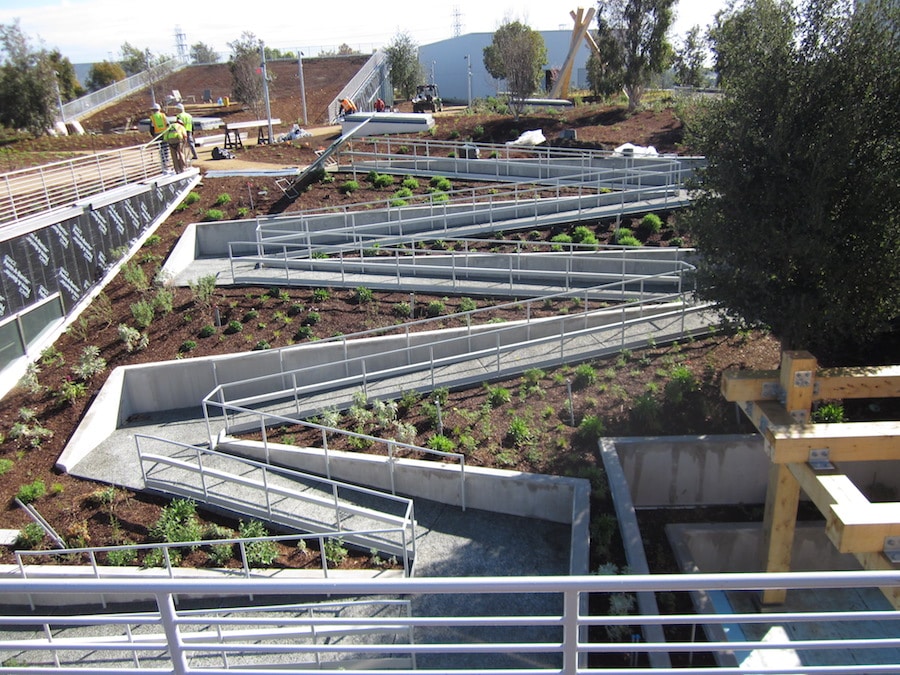When Facebook founder Mark Zuckerberg decided to expand the company’s presence in Menlo Park, California, he knew he’d have to make a statement. All eyes are already trained on the social media giant and any move, especially one as dramatic as building a massive new campus, would be subject to searching criticism from the worlds of business, technology, and design. For a grand space, Zuckerberg and his people needed an architect whose international renown would be even grander.
Known for bold, utterly distinctive structures, like the Guggenheim Museum (Bilbao, Spain) or closer to Facebook’s home, The Walt Disney Concert Hall (Los Angeles, USA), Canadian-born architect Frank Gehry is perhaps the most famous in the world. Upon hearing of Facebook’s intent to build a new space, Gehry reportedly reached out to the company with a proposal. According to a statement from Zuckerberg, Gehry was initially rejected, thinking he would “be very expensive and that would send the wrong signal about our culture.”
Ultimately, Gehry Partners LLP won the bidding process and when Zuckerberg visited Gehry’s Los Angeles studio he was utterly charmed by the open, warehouse-like workspace. Despite the decades separating Gehry and Zuckerberg, the two titans of their industries enjoyed respective bonhomie over the benefits of simple, functional design. Before long Gehry and his team were at work designing a massive new work space for 2,800 Facebook employees.
When the Facebook West Campus (“MPK20”) opened this spring, the building’s low-slung profile shocked many with its raw aesthetic and open floorplan intended to reflect and enable Facebook’s origin as a haven for hackers and progressive engineering. As Zuckerberg wrote to introduce the space: “(it is) a single room that fits thousands of people. There are lots of small spaces where people can work together, and it’s easy for people to move around and collaborate with anyone here … The building itself is pretty simple and isn’t fancy. That’s on purpose. We want our space to feel like a work in progress.”
From a distance, the building unassumingly blends into the landscape, but on closer examination, that relationship to the natural environment is as bold and innovative as one would expect from a Zuckerberg/Gehry collaboration.
Atop MPK20 is perhaps the largest rooftop garden ever conceived. Designed in collaboration with CMG Landscape Architecture, the “garden” takes inspiration not from the intimate oases dotting the modern cityscape, but instead from the massive “rails to trails” urban park projects like the High Line in New York, or Chicago’s 606.

Unfolding across nine acres of space, the rooftop garden is home to more than 400 trees, a half-mile long walking track, various work and gathering spaces, and a coffee bar. There is even a sloped grandstand for concerts and other large events. All selected vegetation is appropriate for the California climate and is expected to serve as a sanctuary for local and migratory birds. The word “garden” feels insufficient to capture the grandeur. Facebook has constructed a “rooftop habitat.”
The benefits the space provides extend far beyond the well-being of Facebook’s employees, who are encouraged to hold meetings and other work events in the green space. The diverse landscape also provides many environmental and cost-saving advantages, including added insulation and heat absorption that reduces the urban heat island effect. Additionally, the green roof will assist in water management, saving and re-using rainwater in drought-plagued California while also lessening the building’s impact on the local stormwater system. With the green roof working in concert with the building’s sophisticated energy systems and the use of sustainable building materials, MPK20 receiving LEED Gold Certification from the US Green Building Council.
With such ambitious plans come certain risks. One of the biggest dangers was that even a small leak in the rooftop garden’s base could have a catastrophic effect on the building. That’s why the architectural and engineering teams brought in Chicago-based American Hydrotech to provide materials and act as a strategic resource. Confident that American Hydrotech’s proprietary waterproofing system kept the building watertight, Gehry’s studio and CMG Landscape Architecture had nearly free rein to shape the rooftop landscape as they pleased. According to Rick Kile of American Hydrotech, the scope of the rooftop garden is an innovation in itself: “To see a large lawn, walking paths, paver patio areas, large trees, sloped plantings in a park is one thing; to see it realized at 40 feet in the air on top of a Frank Gehry building is another.”
The rooftop garden is more than a playground for Facebook employees; it is a feature that actively improves the lives of the community as a whole. With MPK20, Facebook has made a global statement about the company’s values and vision for the future. Kile adds, “We are seeing a new generation of companies place a priority on quality of work life. Sustainability is and will continue to be extremely important as we move forward as a society, and businesses with a green roof are not only able to reap the technical benefits, but are making an outwardly statement to their community and beyond that they are committed to sustainability.”

